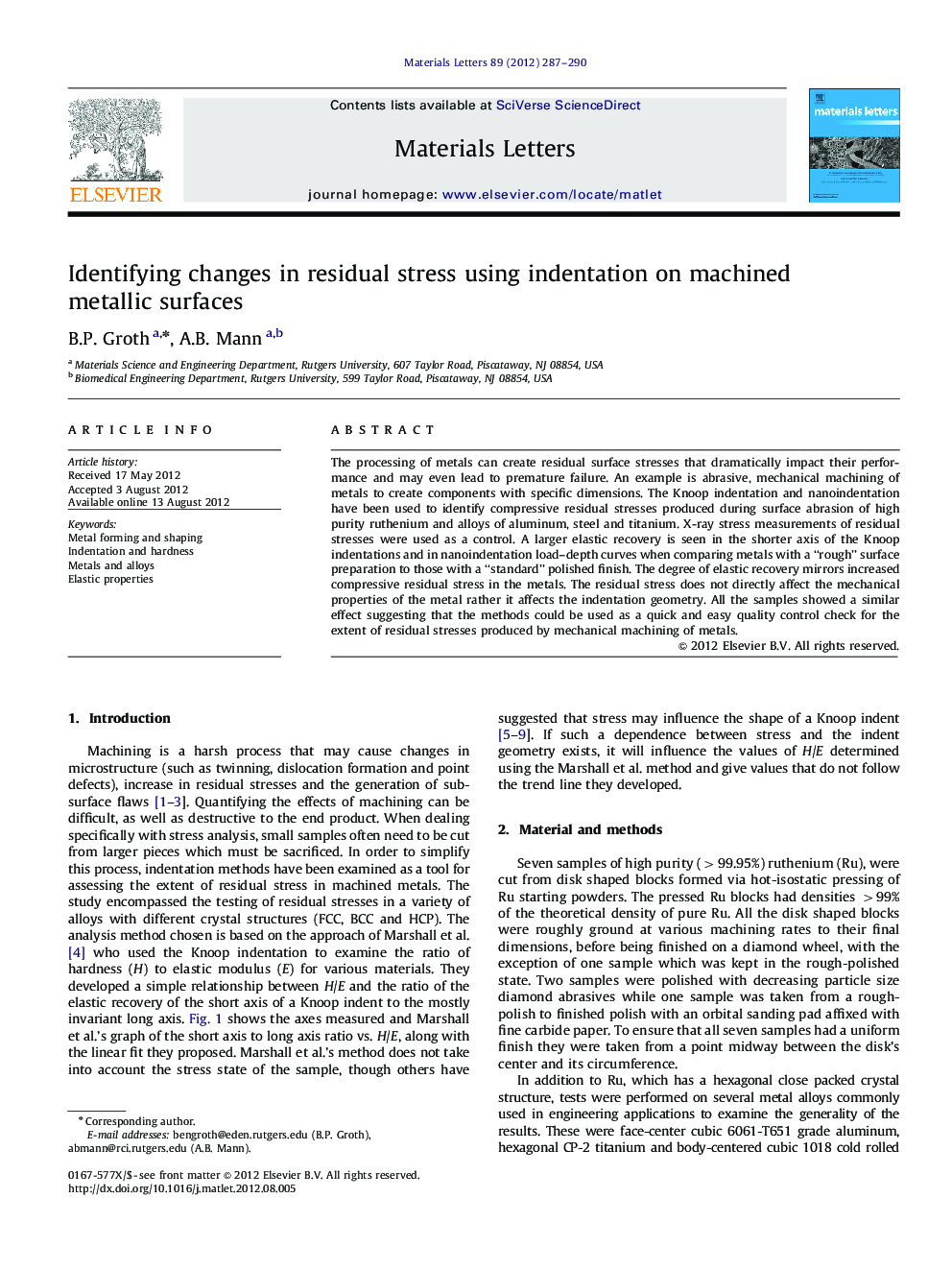| Article ID | Journal | Published Year | Pages | File Type |
|---|---|---|---|---|
| 1646267 | Materials Letters | 2012 | 4 Pages |
The processing of metals can create residual surface stresses that dramatically impact their performance and may even lead to premature failure. An example is abrasive, mechanical machining of metals to create components with specific dimensions. The Knoop indentation and nanoindentation have been used to identify compressive residual stresses produced during surface abrasion of high purity ruthenium and alloys of aluminum, steel and titanium. X-ray stress measurements of residual stresses were used as a control. A larger elastic recovery is seen in the shorter axis of the Knoop indentations and in nanoindentation load–depth curves when comparing metals with a “rough” surface preparation to those with a “standard” polished finish. The degree of elastic recovery mirrors increased compressive residual stress in the metals. The residual stress does not directly affect the mechanical properties of the metal rather it affects the indentation geometry. All the samples showed a similar effect suggesting that the methods could be used as a quick and easy quality control check for the extent of residual stresses produced by mechanical machining of metals.
► Metallic samples were obtained and studied using the Knoop indentation, nanoindentation and XRD stress analysis. ► Knoop indents were affected by the presence of residual compressive stress and confirmed with nanoindentation experiments. ► Results suggest that the Knoop indentation can be used to identify stress; the BCC crystal system potentially more susceptible to effects from residual stressing.
